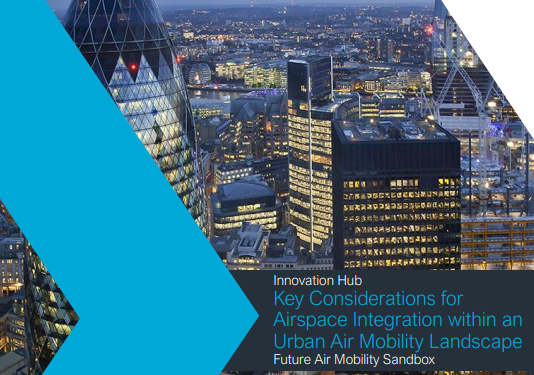The UK Civil Aviation Authority (CAA) Innovation Hub has published the results from Phase 1 of the Future Air Mobility Regulatory Sandbox project. Titled CAP2272 Key Considerations for Airspace Integration within an Urban Air Mobility Landscape, the publication highlights key regulatory issues that need to be addressed to enable safe, efficient, and scalable zero-emission UAM operations.
For the Sandbox Project, the CAA identified key airspace integration challenges by focusing on a use case where eVTOL flights carry passengers between Heathrow Airport and London City Airport with stops in between. The challenges fell broadly into three main areas:
- Maintaining high-tempo UAM operations;
- Integrating low-level flights into congested airspace;
- Accommodating the unique performance capabilities of eVTOL aircraft.
The CAA says this work represents an important milestone. The results will inform future efforts by innovators, governments, and communities to plan for the safe launch and growth of zero-emission UAM in the low-level airspace. The CAA’s soon-to-be-released CONOPS emphasizes proposed approaches to safely overcoming these regulatory challenges and gaps. The CAA is working closely with stakeholders to receive feedback and sharing results with the broader community once completed.
CAP2272: A consortium led by Eve Urban Air Mobility Solutions came together to consider the UK case following the launch of the CAA’s Future Air Mobility Regulatory Sandbox. The consortium, working together with the CAA Innovation Hub, is developing a concept of operations for Urban Air Mobility (UAM) operations, focusing on the transportation of passengers over London in novel vertical take-off and landing (VTOL) vehicles.
For more information visit:




